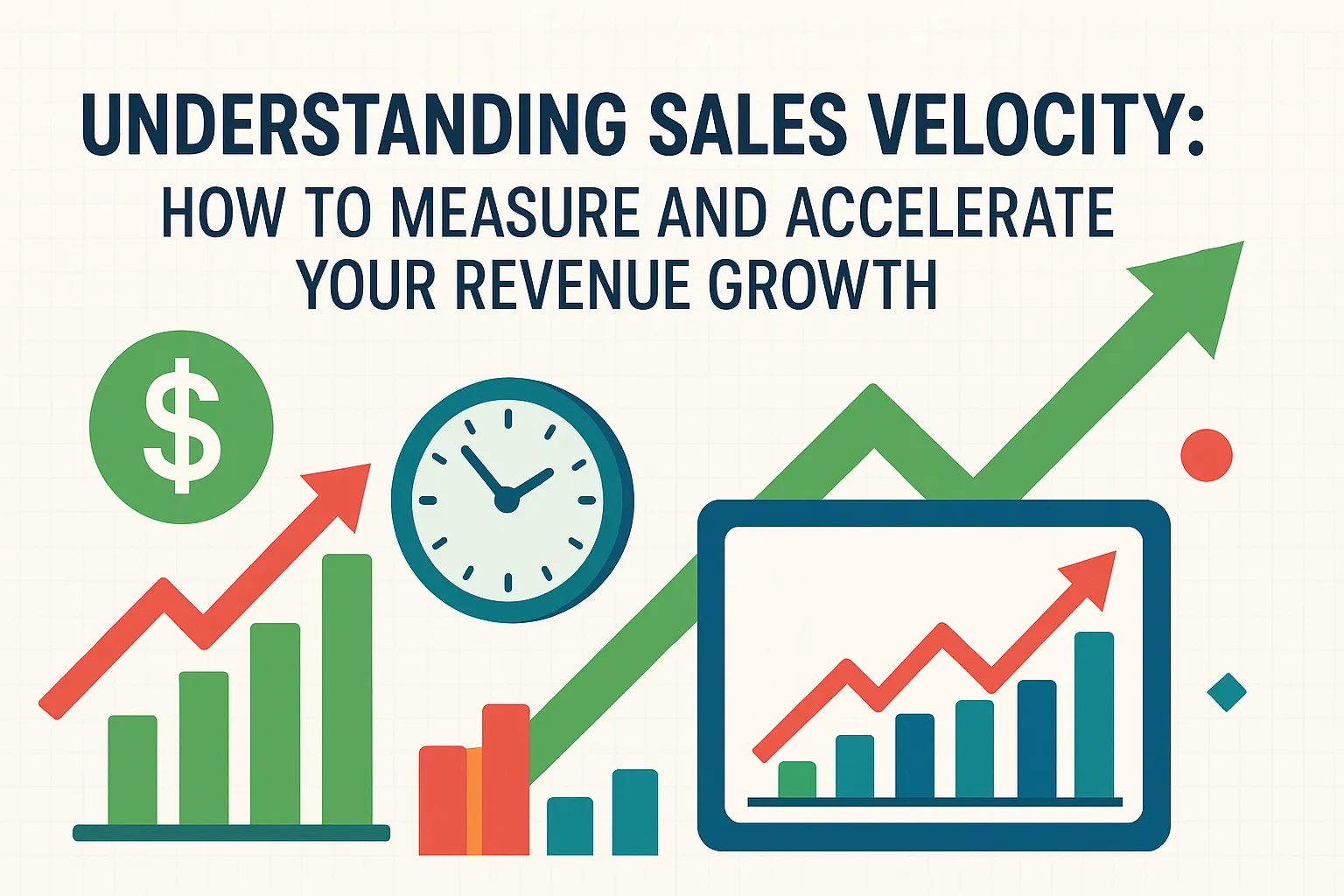
Sales velocity measures how quickly sales opportunities move through your pipeline and result in revenue. It's a key metric for any business aiming to optimize its sales process, forecast more accurately, and identify opportunities for growth.
What Is Sales Velocity?
Sales velocity quantifies the speed at which leads or prospects progress from initial contact to closed deal, ultimately generating revenue for your business. It's less about how many deals you close, and more about how fast you’re able to close them and turn prospects into paying customers.
It takes into account four key factors:
- Number of Opportunities – How many deals are in the pipeline?
- Average Deal Size – What’s the typical value of each deal?
- Win Rate – What percentage of deals are you closing?
- Sales Cycle Length – How long does it take to close a deal?
Sales Velocity Formula:

| Component | Description |
|---|---|
| Opportunities | Total deals in your pipeline |
| Average Deal Size | Average revenue per deal |
| Win Rate | Percentage of deals closed successfully |
| Sales Cycle Length | Time taken (in days) to close a deal |
Here are the metrics in more detail:
-
Opportunities: This is the number of qualified leads in your pipeline during the period of time you're measuring. Of course, you’ll want to focus on sales-qualified leads (SQLs) specifically. Without a doubt, these are your most likely-to-convert leads.
-
Average deal Size: This is the average revenue you generate from new customers over a set period of time. To find your deal value, divide your generated revenue by the number of deals closed. For example, if you bring in $100,000 in revenue during a quarter from 50 sales, your average deal value would be $2,000. ($100,000/50 = $2,000)
-
Win rate: Also known as conversion rate, the win rate is the percentage of leads that turned into paying customers during the period of time you’re measuring. To calculate your win rate, divide the number of deals won by the number of opportunities. As an illustration, if you close one out of four leads over a sales quarter, your closing ratio is 25%. (1/4 = 0.25 or 25%)
-
Length of sales cycle: This refers to the average length of time that it takes for a qualified lead to become a paying customer. This journey through the sales pipeline can take days, weeks, or even months. To calculate the length of a sales cycle, add up the total number of days that it took to close each sale in the time period you’re considering. Then, divide that sum by the total number of deals. For example, if you closed three deals in a week, including one in two days, one in four days, and one in six days, the length of your sales cycle would be four days. (2+4+6 =12) / 3 = 4
Why is Sales Velocity Important?
Tracking sales velocity provides insight into the health and efficiency of your sales process. If your sales velocity is increasing, you’re converting leads faster, which usually results in higher revenue within the same time period. This metric also highlights bottlenecks in your pipeline, helping you identify areas for improvement, such as faster lead qualification or a shorter sales cycle.
How to calculate sales velocity
Let's say:
- You have 40 open opportunities
- Average deal size is ₹50,000
- Win rate is 25% (0.25)
- Sales cycle is 30 days

This means your team is generating ₹16,667 in revenue per day based on current performance.

How to Improve Your Sales Velocity
| Strategy | Description |
|---|---|
| Increase Opportunities | Generate more qualified leads |
| Boost Deal Size | Upsell, cross-sell, or target higher-value clients |
| Improve Win Rate | Provide better training, optimize pitch, build trust with customers |
| Shorten Sales Cycle | Automate repetitive tasks, qualify leads better, reduce follow-up delays |
Conclusion
Sales velocity is more than just a number — it’s a powerful metric that reflects the health and efficiency of your sales process. By tracking it regularly and optimizing its components, you can significantly accelerate your path to revenue growth.